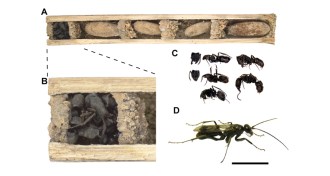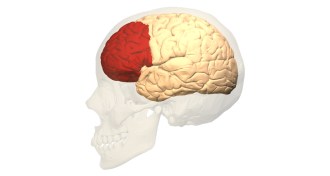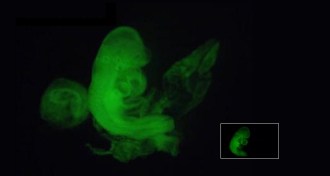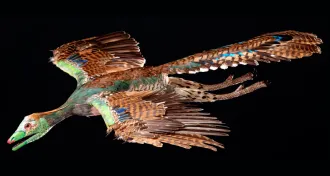Life
Sign up for our newsletter
We summarize the week's scientific breakthroughs every Thursday.
-
 Climate
ClimateMeat-eaters’ greenhouse gas emissions are twice as high as vegans’
Meat-eaters dietary GHG emissions are twice as high as those of vegans, a study finds.
-
 Animals
AnimalsDead-ant wall protects young spider wasps
Bone-house wasps probably use a barrier of deceased insects to guard against predators.
-
 Neuroscience
NeuroscienceMRI scans reveal how the brain tells the body to pee
Scientists see heightened brain activity in men right before they urinate.
-
 Life
LifeDramatic retraction adds to questions about stem cell research
Researchers who reported an easy method for making stem cells admit mistakes mar their work, and have retracted their papers from Nature.
-
 Animals
AnimalsMantis shrimp tune their eyes with sunscreen
Blocking some rays in just the right way creates six ways of actually seeing ultraviolet light.
-
 Animals
AnimalsRed kangaroo’s tail acts like a fifth leg
Red kangaroos wield their tails like another limb when moving slowly.
-
 Paleontology
PaleontologyFlightless dino-bird wore full-body feathers
Recently unearthed Archaeopteryx fossil sports full coat of feathers, suggesting feather evolution was more complex than previously thought.
-
 Neuroscience
NeuroscienceAutism may carry a benefit: a buffer against Alzheimer’s
Brain plasticity of people with autism may protect them from Alzheimer’s disease, scientists propose.
-
 Life
LifeTibetans live high life thanks to extinct human relatives
DNA shared by modern-day Tibetans and extinct Denisovans suggests people picked up helpful genes through interbreeding with other hominids.
-
 Life
LifeStem cell papers retracted
Researchers who reported easy method for making stem cells admit mistakes mar their work, and have retracted their papers from Nature.
-
 Genetics
GeneticsFinally, some solid science on Bigfoot
DNA analysis finds no Bigfoot, no yeti, two weird bears and one scientist on a quest for the truth.
-
 Ecosystems
EcosystemsInvasive insect tied to shrinking river
A river in North Carolina shrank after a hemlock woolly adelgid eradicated eastern hemlock trees in the region.